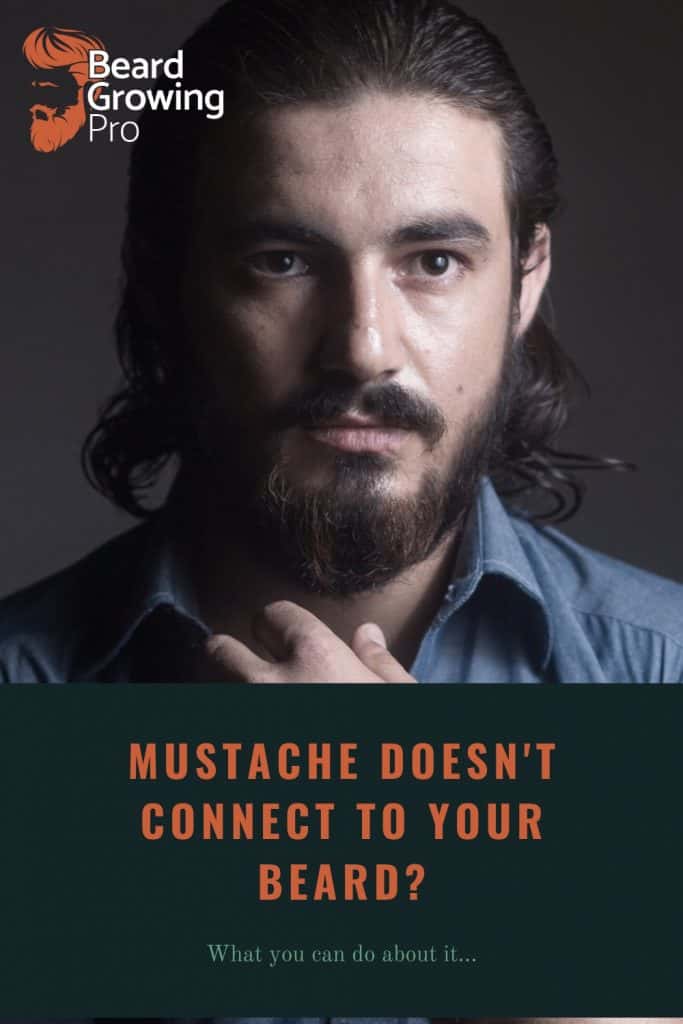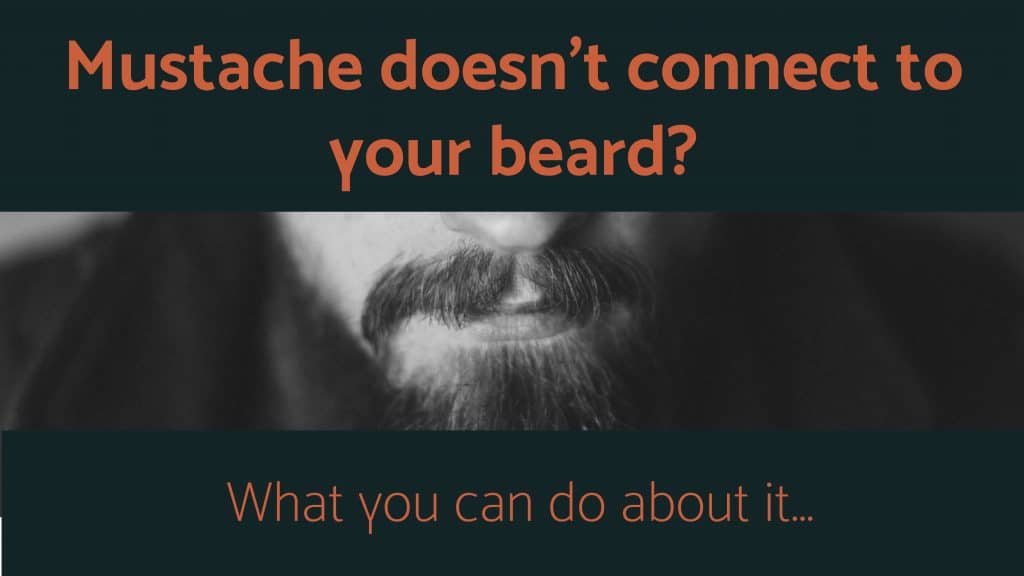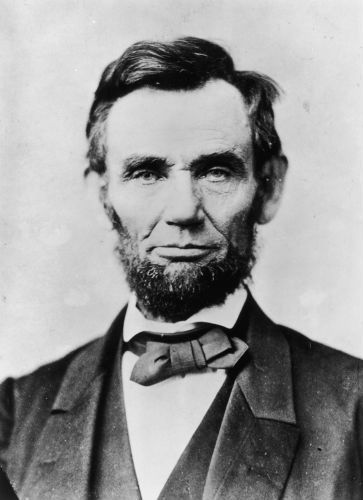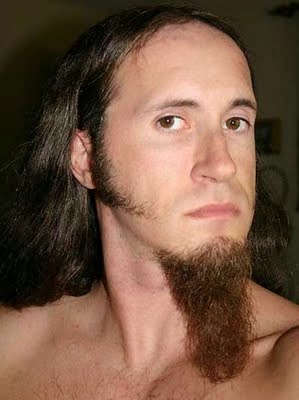During your beard growing journey you will be faced with issues and challenges to overcome. These challenges are different for each and every person growing a beard. It may be that your beard is patchy. It may be that your beard is dry and frizzy and, if you have found your way here, perhaps you have a gap and your mustache doesn’t connect to your beard! Here we are going to go over the options so you can proud of your mustache and beard connections!
Your mustache may not connect to your beard due to genetics, because you haven’t waited long enough, or you are not taking care of your body well enough to make sure that you are growing a healthy mustache. There are also ways to improve your beard connection with minoxidil and micro-needling.
Check out my video summary of this article on the Beard Growing Pro YouTube Channel!
Article Contents
Why your mustache may not be growing to your beard

There are a number of reasons why your mustache is not connecting to your beard. It is one of the most frustrating problems that a person can face.
Maybe you have great coverage everywhere else but maybe you just can’t connect that last little bridging point between your beard and your mustache.
Before looking for complicated, expensive or even dangerous solutions to your problem, let take a look at some reasons why you may be experiencing issues with your connection.
Genetics
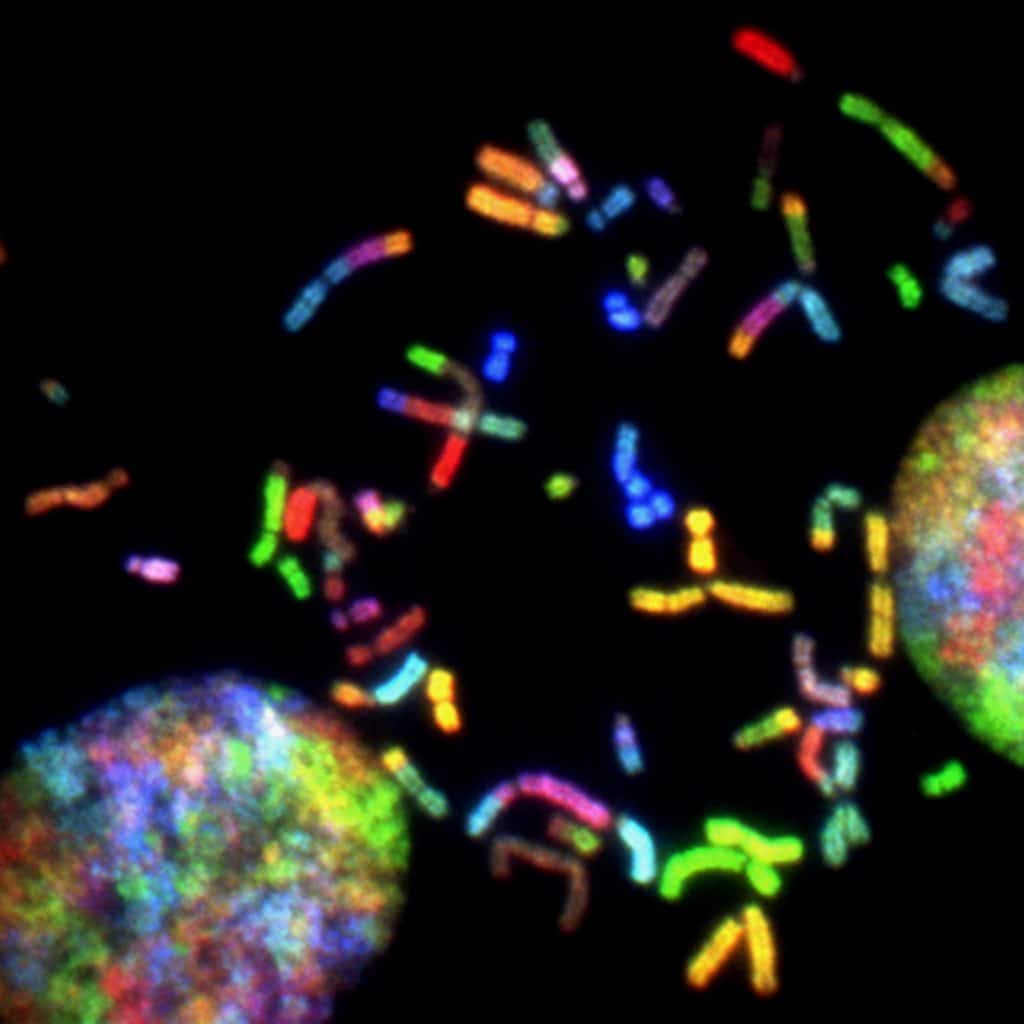
I had a friend in high school (year 7 in the UK) he seemed to have the thickest coverage of facial hair while I still looked like a child! So, there seems to be some truth to the fact that “you are born with it”.
There’s no doubt that my beard growing potential has peaked – although that didn’t happen until I was in my thirties! Some of my friends have said that it wasn’t until their forties that they noticed a huge increase in their beard growing potential!
Your genes are the factor at play here!
Despite what certain blogs or beard experts might tell you the biggest factor in determining your beard growing potential is your genetic makeup. This genetic information has determined your height, your eye color, your hair type – so it makes sense that it is also determining your beard, right?
Take a look at your father and the male relatives on your mother’s side of the family. Do they have beards?
If the answer is no, perhaps you are destined to have the same luck. However, if you do have some cracking beards in your family. Perhaps you just need to be a little more patient!
Furthermore, your nationality will also contribute to whether you will be able to easily grow facial hair or not. People from Mediterranean countries such as Italy and Greece are more likely to have thick facial hair. While, on the other end of the scale, Asians, Latin Americans, and Native Americans are less likely to have dense facial hair coverage.
Patience
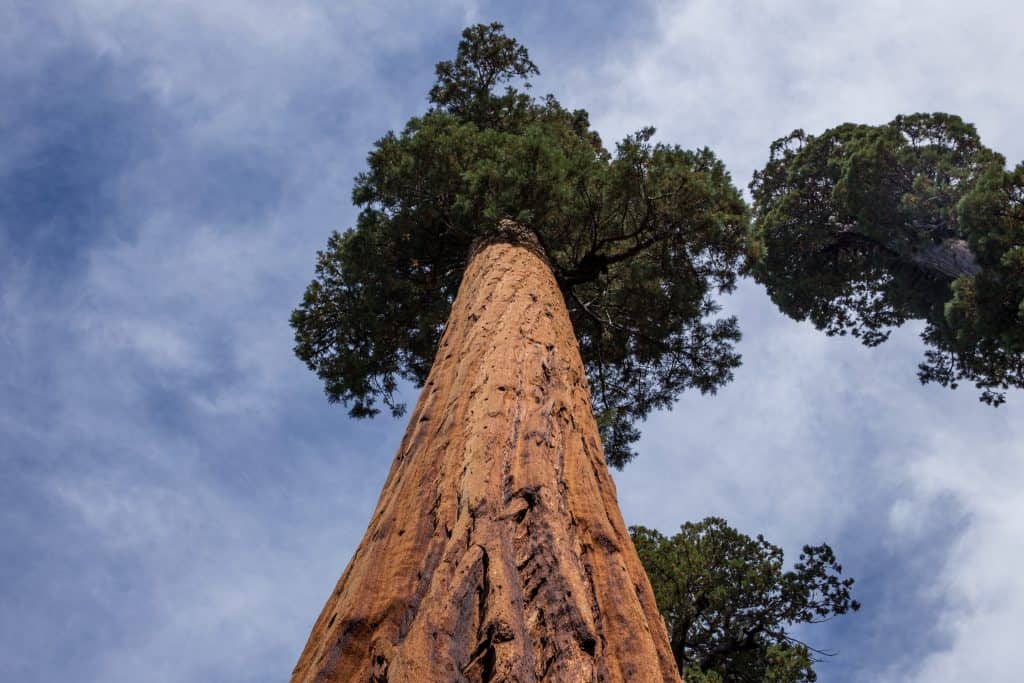
Ah, the one thing that we all seem to struggle with! My mum used to say I was the most impatient person on the planet. I wanted results NOW! Beard growing is much like growing a business – it takes time and patience!
If you only started growing a beard last week and you are getting frustrated then maybe this isn’t for you.
A full beard can take anywhere from three months to eight months to look good. Personally, after about six weeks I was starting to rock a beard where I felt its potential. Now, after about eight months I am pleased with the beard I have and the mustache that comes with it!
It just all takes time – you can’t rush this stuff!
Healthy body to support beard and mustache growing

Maybe your body just isn’t performing at it’s best. You are what you eat and if you are eating shit then your beard will end up being a little shit too!
Taking care of your body and health is probably one of the best ways to look after your beard and grow your beard growing potential! Here are the best things you can do to make sure you are healthy and operating at your best!
Lose weight
Yes, we are all guilty of overindulging. But when it becomes a regular activity for you and you start down the slippery slope of obesity – your beard growing may be impacted!
There are several ways that being overweight can lower testosterone. Firstly, testosterone is converted to the female hormone estrogen in fat tissue. This means that when there is a load of fat in the body there is a high rate of testosterone conversion to estrogen.
Exercise
There’s a whole field of research that shows that exercise is a natural way to get your beard growing powers up – through increased testosterone. Not all exercise is created equally, however. Make sure your exercise contains these activities for maximum effects:
- Sprinting – Studies showed that testosterone levels increased significantly for people who performed a series of short and intense 6-second sprints. The testosterone levels remained high for a long time after the exercise had finished.
- Lift Heavy Stuff – Studies have shown that you should lift heavy weights to boost testosterone levels. Focus on full-body exercises like squats, deadlifts, benchpresses and free weights at 85 – 95 % of your one-rep max. Make sure you have a spotter for these types of exercises!
- Long Rest Periods – Longer rests of more than 120 seconds between reps are better than shorter rest periods. So don’t feel bad when taking a break. You can always work out your upper body and lower body alternatively to maximize your effectiveness in the gym!
- Remember to use your legs – Nothing feels better than doing upper body exercises, like bicep curls or bench press, but studies have shown that there are significant increases in testosterone when leg and lower body exercises are included in the routine.
Eliminate alcohol
Everyone now knows that smoking and alcohol are bad for your health. But did you know that they can significantly impact your testosterone levels which also means your beard growing capacity.
In general, excessive alcohol consumption decreases testosterone. Excessive alcohol consumption and alcohol abuse are associated with decreased testosterone levels. Some specific ways that alcohol affects testosterone levels include:
- Alcohol damages the cells in the testicles which produce testosterone.
- Drinking alcohol results in the release of certain pleasure chemicals. While these feel awesome and can produce pleasant and relaxing feelings, they can also interfere with testosterone synthesis.
- Alcohol can increase a stress hormone, called cortisol, which is known to decrease testosterone synthesis.
- Alcohol may increase the conversion of testosterone to estrogen in the body.
Taking good care of yourself is a very important part of beard growing!
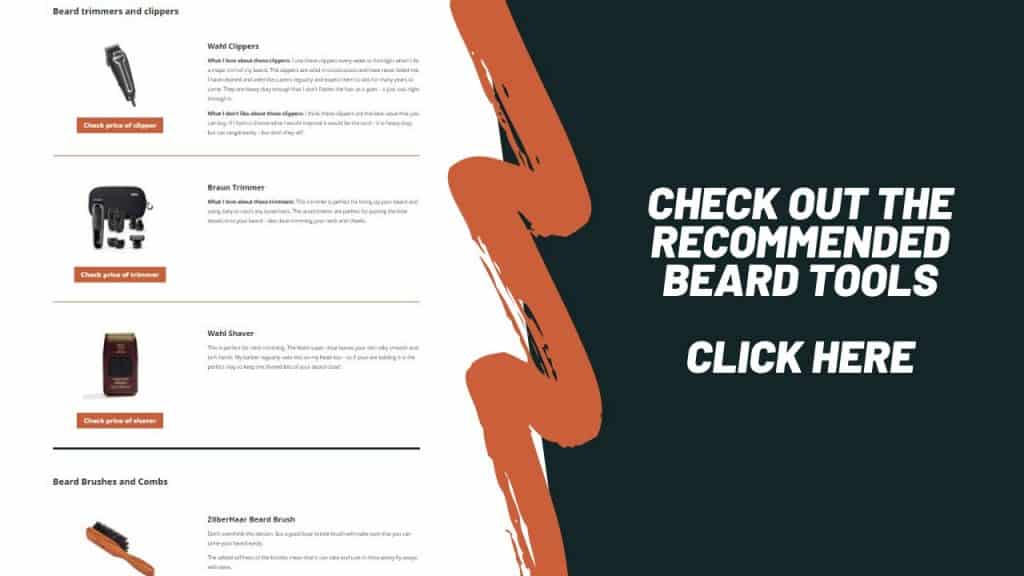
Three different styles of long mustaches that may help
If you are looking after yourself but still your growth is not what you want, check out these mustache styles!
1. Handlebar Moustache

A handlebar mustache is a fantastic option if you don’t have the bit that connects your mustache to your beard/chin. A handlebar mustache actually looks better when it doesn’t connect to your beard properly.
The downside is that it takes a while to grow this magnificent beast. You also need to make sure that you style it every day. If you don’t it will flop into your mouth and be disgusting!
2. Cowboy Mustache

A cowboy mustache is a long mustache that will cover andy gaps in your beard! It is a bit shorter in the middle and longer on the sides. With a minimal amount of styling, this mustache can easily cover any gaps in your beard!
3. Walrus mustache

The walrus mustache is a great option to cover the connection problems with your beard. it’s similar to the other styles above but is styled straight down. You need to trim the bits that are getting into your mouth and the hairs falling below your lip line. Keep the sides long and brush downwards – you’ll be rocking this in no time!
However, another awesome style that will cover up the issues that you are having with your beard!
Beard styles that work without a mustache
Here is a selection of our favorite beards that lack a mustache. You’ll see that a lot of them are like the regular mustache style but simply lack hair between the nose and the upper lip.
If you like any of these styles maybe you have just solved your connectivity issues. If however, you want to keep your beard’s best friend intact check out other interventions to connect your beard and your mustache.
Interventions to connect your mustache and beard
Okay, if you have gotten to this point, you want to fix your mustache issues with more than a longer mustache style or simply removing it altogether.
There really isn’t much you can do to connect your beard to your mustache if you are lacking the hair follicles. Try these options for your beard!
1. Minoxidil
The most well-known hair growth treatment is Minoxidil – you can find out more about it in this wiki – click here. It’s found in hair regrowth products such as Rogaine.
The FDA has NOT approved Minoxidil for use on the face and so all of the instructions are for the scalp.
One of my favorite places on the internet, Reddit, has a subreddit where people show their progress pics. check out this from user u/ImBadAtHalo.

You can see that the cheek hairs of his beard are much hairier and denser than when he started.
One of the issues is that once you stop using a Minoxidil containing product the hairs will simply stop growing. So you need to be aware of the potential expense and commitment required before embarking on this usage.
Besides the fact that you need to do this treatment for a long time – up to a year and a half, you may experience some side effects.
Side Effects with Minoxidil
No medication comes without side effects. Here are some of the common side effects that Minoxidil can cause:
Less Common
- Itching or skin rash
Rare
- Acne at the site of application
- burning of scalp
- facial hair growth
- increased hair loss
- inflammation or soreness at the root of the hair
- reddened skin
- swelling of face
Signs and symptoms of too much medicine being absorbed into the body—Rare
- Blurred vision or other changes in vision
- chest pain
- dizziness
- fainting
- fast or irregular heartbeat
- flushing
- headache
- lightheadedness
- numbness or tingling of hands, feet, or face
- swelling of face, hands, feet, or lower legs
- weight gain (rapid)
Should you start to encounter any of these side effects you need to contact your healthcare professional immediately.
Medical intervention is quite a serious step to take if you are finding that your beard is growing longer on one side of your face. While others have found topical treatment to be most beneficial you may want to consider the non-medical interventions before taking that leap.
2. Micro-needling
Derma rollers and micro-needling are popular with women to smooth out wrinkles and now the manufacturers have men in their sights.
The way they work
- The small needles on the beard roller enter the surface of the skin.
- The body responds by healing the area and sending blood to the affected area.
- Circulation improves where the skin has been rollered. This brings along nutrient & hormone-rich blood to the affected area.
This study shows that scalp hair can be stimulated by derma rolling. Importantly this study also shows that when combined with Minoxidil the effects on the scalp are amplified.
Remember that this is only done on the scalp and the science still hasn’t shown that it will work the same on the beard!
The final word
There we have it! There are plenty of things you can do to make sure that your beard is able to connect to your beard.
Happy growing my bearded friends!
